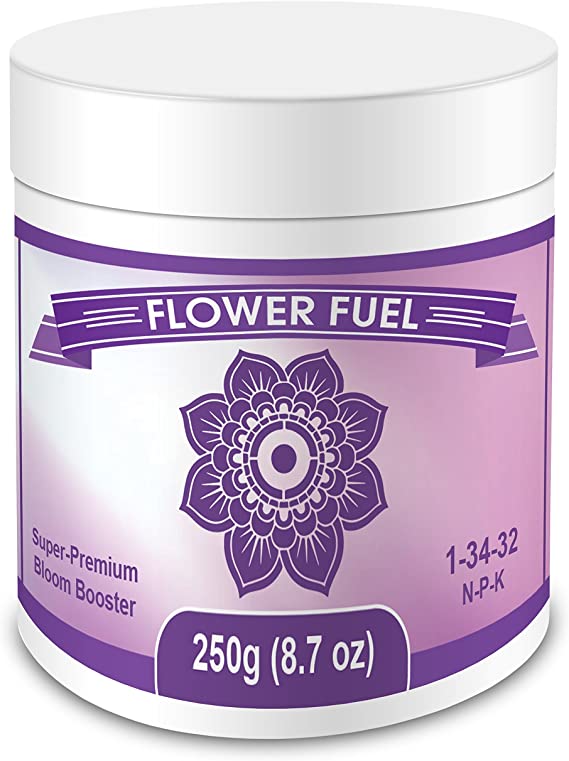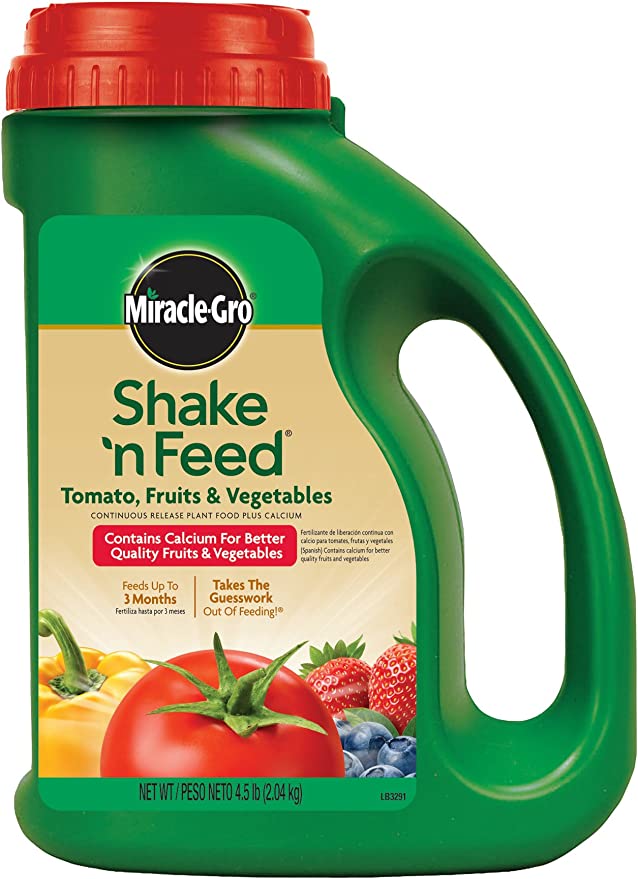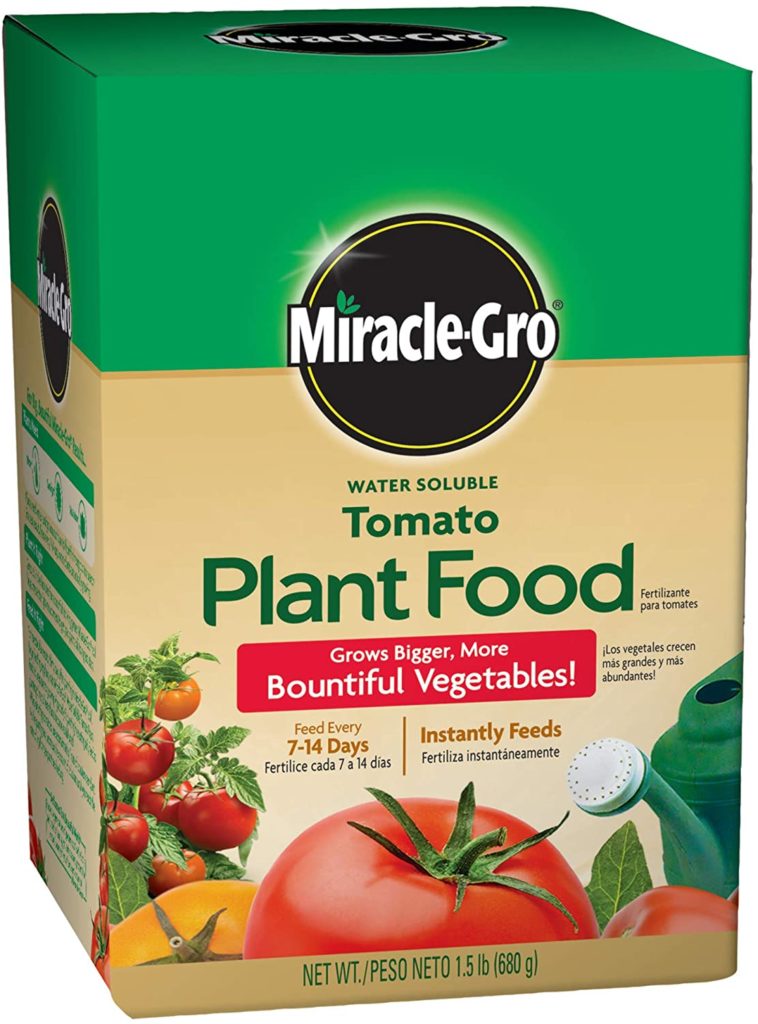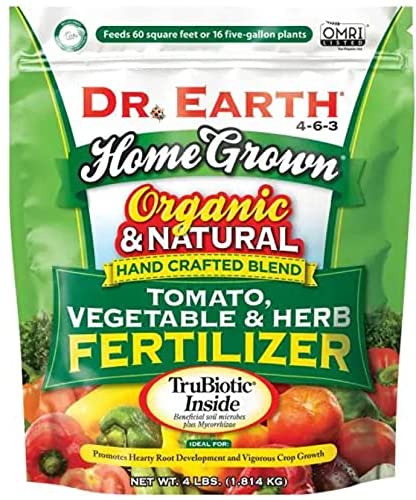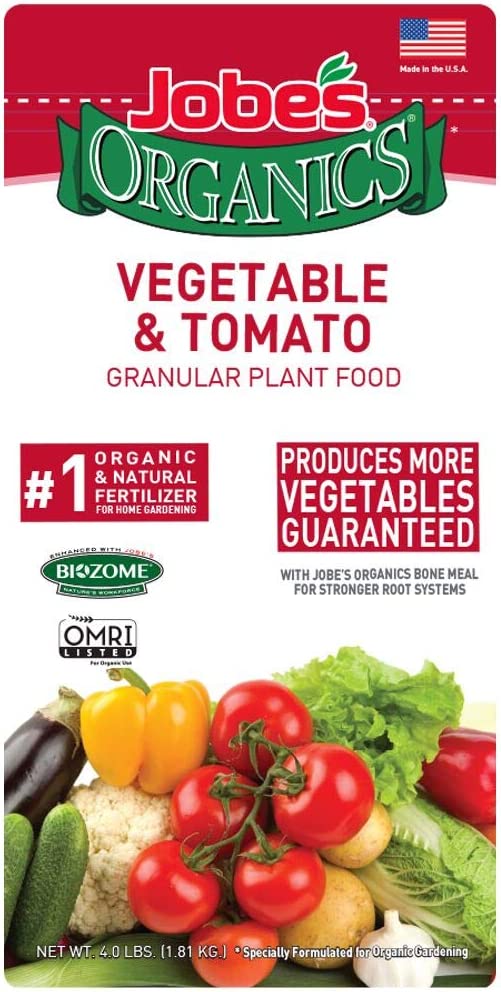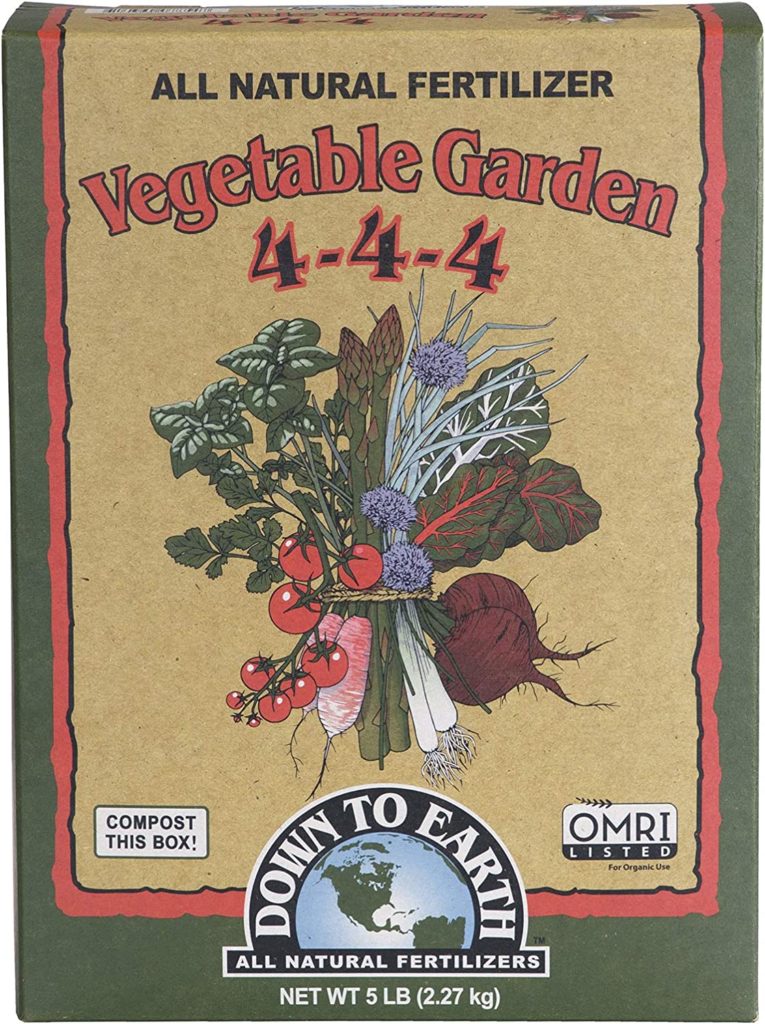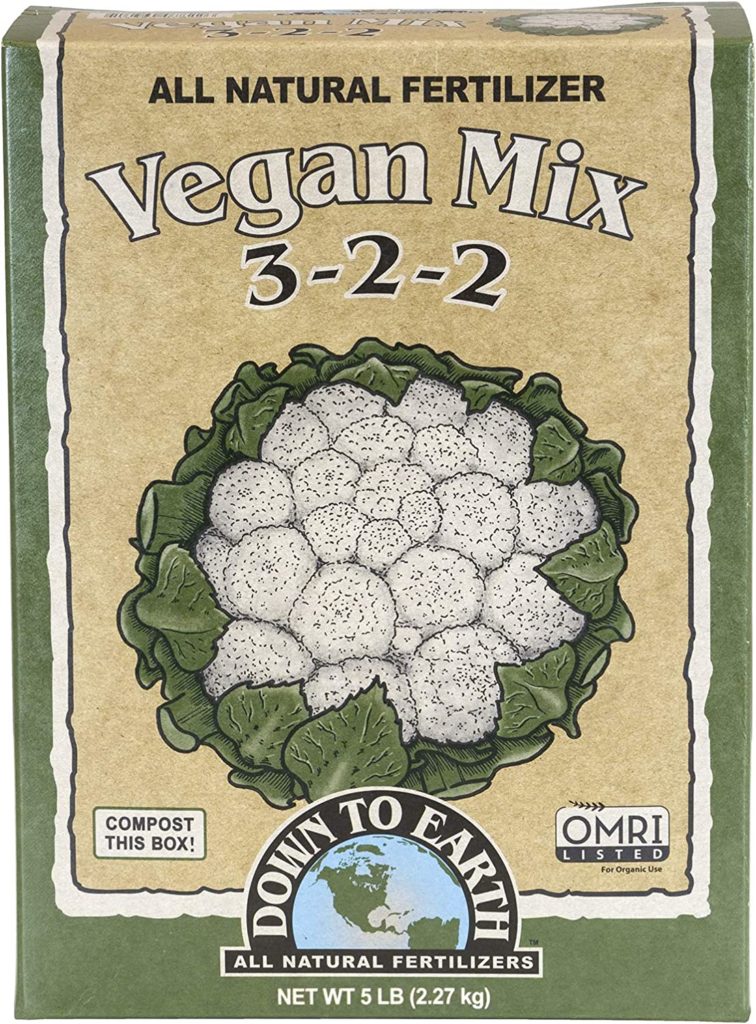Cucumbers are a refreshing food to enjoy when summer weather is hot and humid. If you grow plants this year and take the time to prepare and give them the nutrition they need, you will have a far better chance of having a good harvest.
The fertilizers used for carrots and tomatoes are almost similar to cucumbers. It’s possible that using a fertilizer of higher grade may result in larger cucumbers.
There is a chance that the overall production of the plant would increase. Your cucumbers, for instance, will be able to get the nitrogen, phosphate, and potassium that they need for healthy growth in a form that is simple to apply, thanks to the products.
When growing cucumbers, potassium and phosphorus are the two essential elements. The plant has fairly low nitrogen requirements to facilitate the development of more flowers and increase the amount of fruit produced.
Because it encourages the growth of stems and leaves, an excess of nitrogen throughout the summer might potentially cause cucumber plants to have an unproductive growing season. The type of fertilizers and its quality might significantly influence the quantity of food that can be grown. When it comes to fertilizers for vegetables, there is a vast number of options available to choose from. Choosing the kind of fertilizer that is ideal for cucumbers might be a difficult task.
The Top Best Fertilizers For Cucumbers
To be considered among the best choices for cucumbers, ingredients must be user-friendly and provide a great selection of nutritional components in their respective formulations. Utilizing a product containing synthetic and organic compounds is the most effective strategy to boost cucumber yields and the general health of the plant.
Choosing the ideal fertilizer for your cucumbers doesn’t need making a detailed list of all the possibilities and then putting them to the test at home. Here is a list of several types of top best fertilizers ideal for use with cucumbers. The following are a few of the most highly recommended fertilizers for cucumbers.
1. Bloom Booster by Element Nutrients – Flower Fuel 1-34-32
Despite its higher price, this is an excellent choice for your cucumber. This formula is good for plants like your cucumber since it is low in nitrogen. Using this mixture: your cucumber will be better able to concentrate on flower production rather than leaf growth. As a result, you will have the best outcome harvesting cucumbers.
Since it is water-soluble, it is advantageous to the plant at every stage of its life cycle: from the tiniest cuttings, which may be grown in water, to the biggest bushes. This includes the possibility of growing it in water.
This product can be utilized effectively for soil, coco, hydroponic, and greenhouses systems with any base nutrient, including all major two and three-part fertilizers.
This device is not designed to work with hydroponic growing methods. The only drawback is that it’s concentrated. Flower fuel is made from more than 40 different flowers and plants. These powerful fertilizers include all of the trace elements required to establish healthy plants and are accessible to the gardener. They are essential for the growth of strong plants.
Features:
- The NPK ratio is 1-34-32.
- Superb hydroponics of the highest kind.
- Flowers will benefit from this water-soluble fertilizer.
Direction for Usage:
Add a quarter of a teaspoon to every gallon of feed water. There is a scoop that measures 1/4 teaspoon and a scoop that measures 2.5 teaspoons in each jar. The smaller end of the measuring cup should be used to measure one gallon of water, while the bigger end should be used to measure 10 gallons. It’s important to avoid over-feeding your cucumber plant, but other than that, this is an excellent product!
- Designed to encourage growth
- Water-soluble
- Easy to use
- Hydroponic-grade
- If you need to fertilize larger areas, it may end up costing you more money
2. Miracle-Gro Shake’ n Feed for fruits and vegetables
Fertilizer that is simple to dissolve may be applied to a garden by spraying it on with a hose or pouring it into a bucket and then spreading it out over the plants and soil. It contains an NPK formula of 18-18-21, which encourages rapid plant development, assisting the plant in producing plentiful blossoms and more abundant harvests. It is recommended that freshly sprouted seeds or seedlings apply this Miracle-Gro plant food once every seven to ten days to achieve the best possible results from using the product.
The treatment benefits growing all kinds of garden vegetables and plants. A bag of fertilizer weighing 2 pounds may provide nutrients for around 800 square feet of plant space. If you apply this plant food properly, your plants will result in a larger harvest.
This plant-based diet is beneficial for various vegetables, not only cucumbers. You may apply this fertilizer to other plants in your garden and the cucumbers growing there. Because it is water-soluble, combining and spreading it will not provide any difficulties.
You are free to use any watering can to apply it to your garden in place of a Miracle-Gro garden feeder if you don’t feel like spending the money on one. If you follow the directions for applying the fertilizer, you won’t need to worry about your plants becoming damaged by the chemical.
Features:
- NPK ratio: 18-18-21.
- Organic ingredients.
- Specifically formulated for use with Tomatoes & Veggies.
- It’s simple to use.
- It can be utilized both above ground and in containers.
- Up to three months of feeding.
- Budget-friendly formula.
Direction for Usage:
The granules of this product need to be dissolved in water at a rate of one and a half teaspoons per one and a half liters of liquid. When spraying your garden with the hose garden feeder, make sure you follow the guidelines on the feeder.
- It dissolves more quickly in water
- Increases the number of flowers produced
- Stronger root development and rapid growth are encouraged by the mixture
- If you want excellent results, you’ll need to apply them regularly
- It is not organic
3. Plant Food – Miracle-Gro 2000422
The fertilizer from a firm that specializes in all things connected to gardening is one of the most excellent general alternatives we provide for your cucumbers. It is possible to use Miracle-Gro Plant Food for Tomatoes and other vegetables with a hose dispenser to spray the plant’s leaves with the product. Or it can be mixed with water in a watering can and applied to the plant or soil at the plant’s base, depending on the amount of water that is available. Either way, the plant will receive the nutrients it needs to grow.
The granules dissolve quickly and have an NPK ratio of 18-18-21, perfect for healthy development and abundant flower production. This ratio promotes healthy growth. Every one to two weeks, cucumber seedlings or seedlings that have just been transplanted into the garden may have plant food made with Miracle-Gro administered to them. A single 1.5-pound bag is sufficient to nourish a garden that is 600 square feet in size.
Features:
- The NPK ratio is 18-18-21.
- Organic or non-organic: Non-organic.
- The water-soluble kind.
Direction for Usage:
If you’re watering your outside plants, use one tablespoon of Miracle-Gro for every gallon. For indoor plants, use 1/2 tsp per gallon of water (not a tablespoon). To mix the plant food, filling your watering can lead to the maximum. Soak the plants’ roots if you want the greatest results. You can find out more about the coverage region on the label.
- When mixed with water, it dissolves quickly
- Contains the ideal ratio of nutrients for cucumbers
- Made to encourage flower growth for cucumbers
- Made specifically for tropical and palm trees
- Non-organic
4. Dr Earth Organic 5 Tomato, Vegetable & Herb Fertilize
A single application of Dr Earth’s Organic Fertilizer improves the quality of the garden soil and nourishes cucumbers for three to six months. It has an NPK analysis of 4-6-3, suitable for increasing yields to their full potential.
Moreover, the cucumbers’ taste can be enhanced with the micronutrients, trace minerals, humic acid, and proteins that offer a wide range of plant nutrients. In addition to that, the product comes with a fantastic package.
A bag weighing four pounds of this granulated fertilizer may only cover around sixty square feet of garden space if applied in the recommended manner. This high-quality product may be used for a longer period than similar products, which will need less frequent reapplication.
This is one of the best fertilizers available for tomatoes and cucumbers since it contains ingredients safe for humans and animals. To grow nutritious vegetables in the soil, a product from Dr Earth Organic known as 5 Tomato, Vegetable & Herb Fertilizer is an excellent choice.
These granules of organic fertilizer are very user-friendly, and their shelf life is far longer than traditional fertilizer. Even if it’s a little pricey, this fertilizer is your best option. Despite this, the expense is justifiable due to the excellent tomatoes and cucumbers produced directly from the process.
Features:
- • NPK ratio: 4-6-3.
- • Organic Mixture.
- • Food and feed-grade materials.
- • It’s simple to use.
- • American-made and environmentally friendly.
- • GMO-free product.
- • Improves the quality of the soil.
Direction for Usage:
During the growth season, apply Dr Earth Organic 5 every two months. 1-1/3 cups per 10 square feet for new plants, or 1/4 cup per half-cubic-foot potting soil. Use one cup of top dressing for every 10 square feet of growing space for plants already grown. In addition, it may be blended with water to be used for foliar feeding or feeding the roots deeply. Please refer to the label on the product for more instructions.
- Long-lasting
- Includes the addition of certain micronutrients and trace minerals
- OMRI-approved
- Improves the quality of good soil
- It’s safe for dogs and humans alike
- It’s a little too expensive for the amount of coverage
- It has a strong odor, and it’s not pleasant
5. Jobe’s 09026NA Plant Food Vegetables & Tomato
The organic fertilizer produced by Jobe’s Organics has garnered widespread recognition. This is one of our go-to fertilizers for growing cucumbers and other plants that produce edible fruits and vegetables, such as zucchini.
The biozome included in this product provides plants with the nutrients they need and shields them against the attack of harmful organisms. This application, which may be administered before, during or after the period of peak growth, is very beneficial to the soil.
The granules are worked into the top two inches of soil, giving the plants a steady supply of nutrients. This is done to guarantee the health of the plants. The drip irrigation system is not designed for growing plants of this particular species.
You can do a lot with very little effort if you use this particular brand. This organic fertilizer from Jobe’s has an NPK analysis of 2-5-3, making it an excellent choice for use in the production of cucumbers.
In addition, it contains Jobe’s Biozome, a patented blend of beneficial microorganisms, healthy bacteria generated from mushrooms, and nutrients. This improves the overall quality of the soil and shields the plants against pest and disease infestations and illnesses.
Features:
- NPK ratio: 2-5-3.
- Formula made from natural ingredients.
- Ideal for growing vegetables.
- It’s simple to use.
- Guaranteed to yield more vegetables.
- OMRI-approved.
- Granules dissolve quickly and easily.
- Budget-friendly.
Direction for Usage:
Each 2-inch plant or 10 square feet needs one and a half teaspoons of fertilizer. To get your soil ready for organic container gardening, seeds, and new plantings: Before planting, add Jobe’s Organics Vegetable & Tomato Granular Fertilizer to the soil. Use one and a half tablespoons for each four-inch pot or one and a half cups for each sixteen-inch pot.
- Cucumbers can be fed for six weeks
- Contains only natural components
- Beneficial microbes have been added
- The unpleasant odor that might be unpleasant
6. Down to Earth Organic Vegetable Garden Fertilizer
Dr Earth Organic 5 is very beneficial to the growth of cucumbers and all other types of herbs and vegetables. You receive a bag of high-quality fertilizer that weighs four pounds in exchange for this brand’s product, which is competitively priced.
If you are seeking a solution that is inexpensive and easy to use and optimized for solubility, this may be a suitable choice for you.
This formulation incorporates pro-biopics and mycorrhizae, which contribute to improved soil quality and the growth of more robust plants. This product may be used in any setting, and you will still get outstanding results. It’s. Because they are not genetically modified and do not contain any manure or sludge, the cucumbers you grew in your garden may be consumed without fear.
If you are looking for an effective and risk-free fertilizer, you may want to consider this form of powder fertilizer. It will be quite some time before fragile seedlings produce blooms. Hence, it is crucial to get off to a good start by using a well-balanced fertilizer with an optimum ratio of NPK components.
Because it has an NPK ratio of 4-4-4, Down to Earth Organic Vegetable Fertilizer is an ideal food source for early transplants.
In addition, the product is made up of organic components and has trace amounts of calcium, magnesium, and iron. Granular garden fertilizer may be used for various applications and can be worked into the soil to increase the development of vegetables and herbs and their yield.
One container, five pounds in weight and treats about one hundred square feet of garden plants, is considered one treatment. Using Down to Earth, you may provide your plants with nutrition for up to one month at a time.
Features:
- NPK ratio: 4-4-4.
- Formula made from natural ingredients.
- Food and feed-grade materials.
- It’s simple to use.
- No GMOs.
- Improves the quality of the soil.
- Handcrafted using materials safe for plants.
Direction for Usage:
When preparing new gardens, use 3-6 pounds of compost per 100 square feet and carefully mix it into the top three inches of the soil. To prepare the soil for fresh transplants, put one to two tablespoons into each hole, mix it well, and thoroughly water it.
You should side dress grown plants with 2-4 ounces of fertilizer once a month during the growing season. The amount you use will vary based on the size of the plant and the desired growth rate.
- Maintains effectiveness for up to one month
- Enhanced with trace minerals
- Organic
- It’s a little costly
7. Down to Earth Organic Vegan Fertilizer Mix 3-2-2, 5 lb
Once again, Down to Earth has offered a delightful gift for organic gardeners who are vegan or vegetarian. Nutrient-dense components such as alfalfa meal, canola meal, and soybean meal are utilized to replace animal products or animal by-products in this combination.
This nitrogen-rich fertilizer is manufactured by carefully combining plant-based components. It worked wonderfully on some pickled cucumbers in a region.
Additionally, each plant produced a surprising quantity of fruit, with various tastes and freshness. As a dog owner, you may have become used to expecting an organic meal to smell appealing to your pet. It was a tremendous hit with the pet. Gardeners are utilizing this to cultivate everything from veggies to herbs and are happy with the organic results.
Features:
- NPK ratio: 3-2-2.
- Granular type fertilizer.
- Slow-release mix.
Direction for Usage:
When applying to vegetable beds, spread between 2.5 and 5 pounds per 100 square feet and thoroughly mix into the top three inches of the soil. Add one to two tablespoons per planting hole for new transplants, then mix the powder into the soil and thoroughly water it. Repeat once a month while the plants are actively developing.
- Suitable for vegetarians and vegans
- There are no synthetic ingredients in this plant-based product
- • It may be used on any plant that needs nitrogen
- If you need to fertilize larger areas, it may end up costing you more money
Frequently Asked Questions:
When choosing a fertilizer for vegetables and tomatoes, you need to be very cautious about choosing a fertilizer with a level of nitrogen (N) equal to or lower than the other values in the NPK ratio. An NPK of 5-6-8 or 3-3-3, for instance, are both examples of an NPK formula.
The kind of fertilizer you use and how it is applied can determine how often you need to feed your plants. Experts claim fewer product applications during the growing season for slow-release formulas. Perhaps between every three and six months. Water-soluble products provide a speedier onset of action but need weekly reapplication when used on plants grown in containers.
Fertilizing cucumbers is recommended unless the plants are planted in containers that have already been modified with a time-release fertilizer. In this case, it is not recommended.
Instead of filling containers with garden soil, which tends to compact and prevent the growth of root systems, use potting soil with good drainage. To prevent the soil from drying up, you should fertilize it regularly and water it often.
Since cucumber plants have such delicate root systems, they cannot absorb sufficient amounts of moisture if the surrounding air temperature is too cold. In addition to requiring enormous volumes of water at each growth stage, proper nutrition must also be provided at the appropriate ratios.
Before putting cucumber seedlings in the ground, sprinkle some fertilizer on the ground. According to the directions provided by the brand, the second round of administration may be started after the flowers begin to bloom.
Cucumbers planted in the ground should get a dose of fertilizer once each month at the very least. Depending on the kind of fertilizer that you use, it is possible that established potted plants may need an application of plant food either once per week or twice per week.
Conclusion
Organic fertilizers, on average, need more time to be effective, as they do not include any potentially hazardous components. You can use either an organic or a non-organic fertilizer, depending on the specifics of your requirements, preferences, and other aspects. Hence, you’ll have full control over everything.
The situation’s specifics will determine which kind of fertilizer would be most beneficial for your cucumbers if you were to use it. Over time, you’ll learn which methods work best and provide the greatest long-term benefits.

